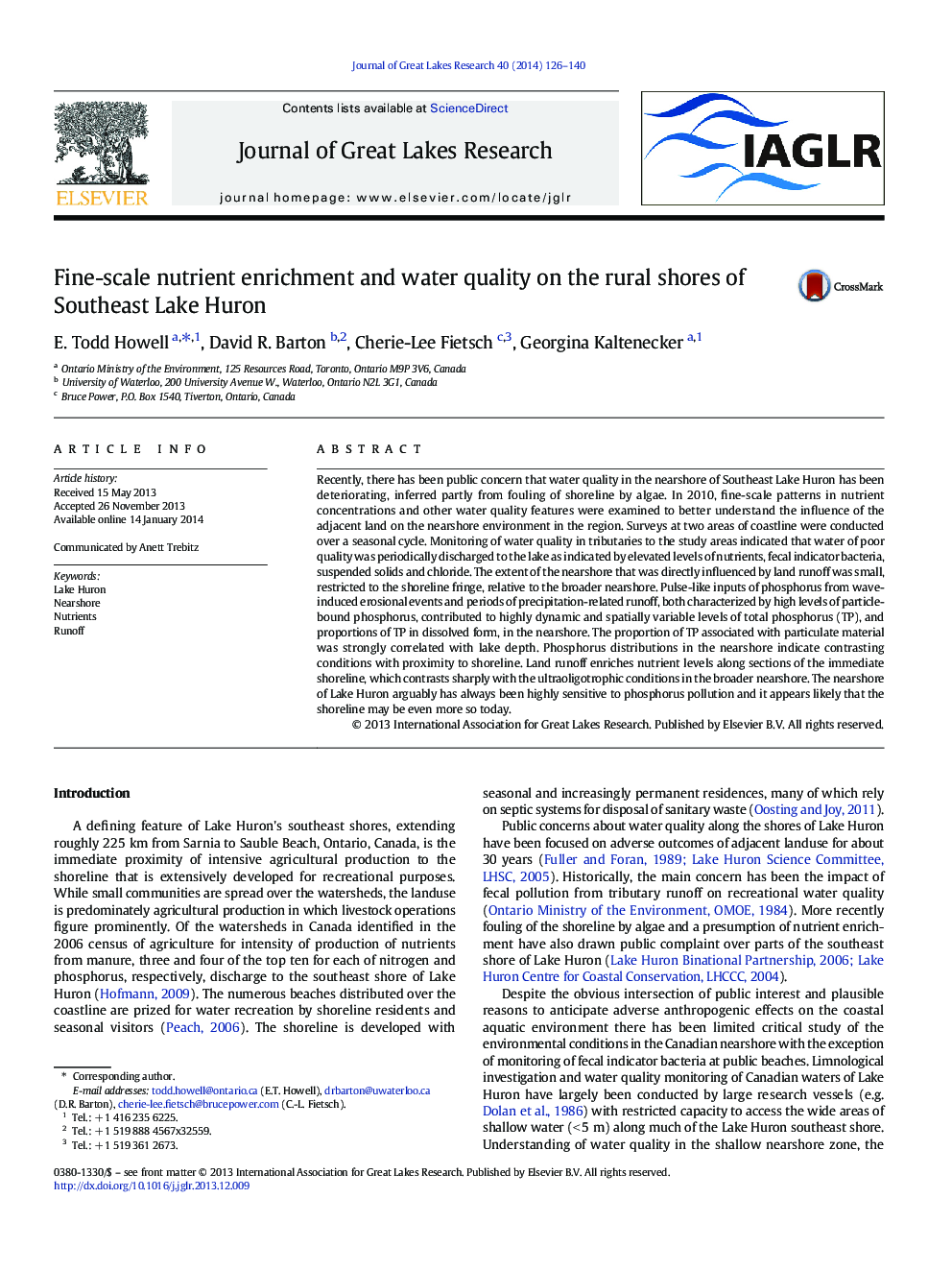| Article ID | Journal | Published Year | Pages | File Type |
|---|---|---|---|---|
| 6305364 | Journal of Great Lakes Research | 2014 | 15 Pages |
Abstract
Recently, there has been public concern that water quality in the nearshore of Southeast Lake Huron has been deteriorating, inferred partly from fouling of shoreline by algae. In 2010, fine-scale patterns in nutrient concentrations and other water quality features were examined to better understand the influence of the adjacent land on the nearshore environment in the region. Surveys at two areas of coastline were conducted over a seasonal cycle. Monitoring of water quality in tributaries to the study areas indicated that water of poor quality was periodically discharged to the lake as indicated by elevated levels of nutrients, fecal indicator bacteria, suspended solids and chloride. The extent of the nearshore that was directly influenced by land runoff was small, restricted to the shoreline fringe, relative to the broader nearshore. Pulse-like inputs of phosphorus from wave-induced erosional events and periods of precipitation-related runoff, both characterized by high levels of particle-bound phosphorus, contributed to highly dynamic and spatially variable levels of total phosphorus (TP), and proportions of TP in dissolved form, in the nearshore. The proportion of TP associated with particulate material was strongly correlated with lake depth. Phosphorus distributions in the nearshore indicate contrasting conditions with proximity to shoreline. Land runoff enriches nutrient levels along sections of the immediate shoreline, which contrasts sharply with the ultraoligotrophic conditions in the broader nearshore. The nearshore of Lake Huron arguably has always been highly sensitive to phosphorus pollution and it appears likely that the shoreline may be even more so today.
Keywords
Related Topics
Physical Sciences and Engineering
Earth and Planetary Sciences
Earth and Planetary Sciences (General)
Authors
E. Todd Howell, David R. Barton, Cherie-Lee Fietsch, Georgina Kaltenecker,
